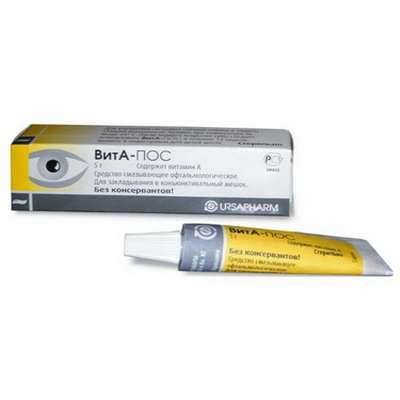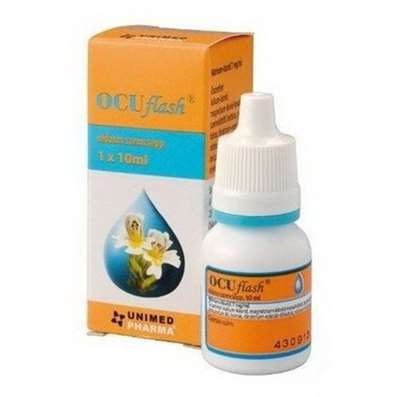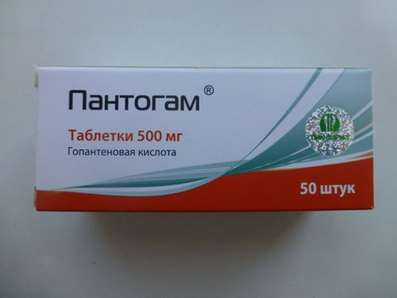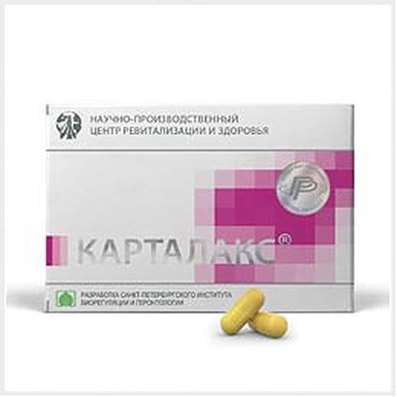Instruction for use: Dezrinit
I want this, give me price
Active substance Mometasone
ATX Code R01AD Corticosteroids
Pharmacological group
Glucocorticosteroid for topical use [Glucocorticosteroids]
Nosological classification (ICD-10)
J01 Acute sinusitis
Inflammation of the sinuses, Inflammatory diseases of the paranasal sinuses, Purulent inflammation of the paranasal sinuses, Infectious-inflammatory diseases of ENT organs, Infection of the sinuses, Combined sinusitis, Exacerbation of sinusitis, Acute inflammation of the paranasal sinuses, Acute bacterial sinusitis, Acute sinusitis in adults, Subacute sinusitis, acute Sinusitis, sinusitis
J30 Vasomotor and allergic rhinitis
Allergic rinopatiya, Allergic rhinosinusopathy, Allergic respiratory diseases, Allergic rhinitis, nasal allergy, Seasonal Allergic Rhinitis, Vasomotor rhinitis, Long-allergic rhinitis, Perennial allergic rhinitis, Perennial allergic rhinitis, Year-round or seasonal allergic rhinitis, Year-round allergic rhinitis nature, Rhinitis allergic vasomotor, Exacerbation of pollen allergy in the form of Syndrome rinokonyunktivalnogo, Acute allergic rhinitis, Edema of the nasal mucosa, Edema of the nasal mucosa, Swelling of the mucosa of the nasal cavity, Swelling of the nasal mucosa, Swelling of the nasal mucosa, pollen disease, Permanent allergic rhinitis, rhinoconjunctivitis, rhinosinusitis,rhinosinusopathy, Seasonal allergic rhinitis, Seasonal Allergic Rhinitis, Haymarket rhinitis, Chronic allergic rhinitis, Allergic respiratory diseases
J30.1 Allergic rhinitis caused by the pollen
hay fever, Hypersensitivity to pollen, Polypoid allergic rhinosinusitis, Seasonal hay fever, rhinitis
J30.2 Other seasonal allergic rhinitis
Allergic rhinitis seasonal, Seasonal rhinitis of an allergic nature
J30.3 Other allergic rhinitis
Allergic rhinitis all year round, Allergic rhinoconjunctivitis
J32 Chronic sinusitis
Allergic rhinosinusopathy, purulent sinusitis, Catarrh nasopharyngeal area, Catarrh of the sinuses, Exacerbation of sinusitis, chronic Sinusitis
J33.0 Polyp of the nasal cavity
Polyposis of the nose, Resection of nasal cavity polyps
J33.1 Polyposis degeneration of the sine
Polyposis of the nose
Composition
Spray nasal dosed 1 dose
active substance:
Mometasone furoate monohydrate 0.052 mg
(In terms of mometasone furoate - 0.050 mg)
Excipients: Avicel RC-591 (MCC, carmellose sodium) - 2 mg; Glycerol - 2.1 mg; Benzalkonium chloride solution 500 g / l - 0.04 mg; Polysorbate 80 - 0.01 mg; Citric acid monohydrate 0.2 mg; Sodium citrate dihydrate 0.28 mg; Water for injection - a sufficient amount to 100 mg
Description of dosage form
Milky white suspension without agglomerates, placed in a white PE bottle, equipped with a dosing device and a transparent polypropylene cap.
pharmachologic effect
Pharmacological action - anti-inflammatory, antiallergic, glucocorticoid (local).
Pharmacodynamics
Mometasone is a synthetic GCS (glucocorticosteroids) for topical application.
Has anti-inflammatory and anti-allergic effect. Local anti-inflammatory effect of the drug is manifested when it is used in doses, in which no systemic effects occur. It inhibits the release of inflammatory mediators. Increases the production of lipomodulin, which is an inhibitor of phospholipase A, which causes a decrease in the release of arachidonic acid and, accordingly, inhibition of the synthesis of metabolic products of arachidonic acid-cyclic endoperoxides, PG. It prevents the accumulation of neutrophils, which reduces inflammatory exudate and production of lymphokines, inhibits the migration of macrophages, leads to a decrease in the processes of infiltration and granulation. Reduces inflammation by reducing the formation of the chemotaxis substance (effect on late allergy reactions), inhibits the development of an immediate allergic reaction (by inhibiting the formation of metabolites of arachidonic acid and reducing the release of inflammatory mediators from mast cells).
In studies with provocative tests (with application of antigens to the mucous membrane of the nasal cavity), a high anti-inflammatory activity of the drug was demonstrated both at the early and late stages of the allergic reaction. When compared with placebo, there was a decrease in histamine and eosinophil activity, as well as a decrease in the amount of eosinophils, neutrophils and proteins of epithelial cells (compared with the initial one).
Pharmacokinetics
With intranasal application, the systemic bioavailability of mometasone fuorate is <1% (with a sensitivity of 0.25 pg / ml). A small amount of active substance that can enter the digestive tract (gastrointestinal tract) with intranasal application, is absorbed to an insignificant degree and actively biotransformed when first passed through the liver.
Indications
Treatment of seasonal and all-year-round allergic rhinitis in adults and children over 2 years;
Acute sinusitis or exacerbation of chronic sinusitis in adults (including the elderly) and children over 12 years of age - as an aid in the treatment of antibiotics;
Prevention of seasonal allergic rhinitis of moderate and severe course in adults and children over 12 years of age (recommended for 4 weeks before the start of the dusting season);
Treatment of polyposis of nose in adults over 18 years.
Contraindications
Hypersensitivity to mometasone or any of the components of the drug;
Children's age (with seasonal and year-round allergic rhinitis - up to 2 years, with acute sinusitis or exacerbations of chronic sinusitis - up to 12 years, with polyposis of the nose - up to 18 years);
Recent surgical intervention or trauma to the nose - until the wound is healed (due to the inhibitory effect of GCS on healing processes).
With caution: tuberculosis (active or latent) of the respiratory tract, fungal, bacterial, systemic viral infection, incl. Herpes simplex with eye damage; Long-term therapy with SCS; Presence of an untreated local infection involving the mucous membrane of the nasal cavity; pregnancy; The period of breastfeeding.
pregnancy and lactation
Special studies on the safety of mometasone during pregnancy and during breastfeeding were not conducted.
As with other nasal SCS, Desinitis should be given during pregnancy and during breastfeeding only if the expected benefit from its use exceeds the potential risk to the fetus and newborn.
Newborns whose mothers used SCS during pregnancy should be carefully examined to identify possible hypofunction of the adrenal glands.
Side effects
The frequency of side effects is presented in accordance with the following classification: very often - not less than 10%; Often - not less than 1, but less than 10%; Infrequently - not less than 0,1, but less than 1%; Rarely - not less than 0.01, but less than 0.1%; Very rarely - less than 0.01% (including isolated cases).
From the side of the immune system: rarely - hypersensitivity reactions, incl. Bronchospasm, shortness of breath; Very rarely - anaphylaxis, angioedema.
From the central nervous system (central nervous system): often - a headache (in adults and children). Children experienced growth retardation, psychomotor hyperactivity, sleep disturbance, anxiety, depression, aggressive behavior.
On the part of the respiratory system, chest and mediastinum: often (in adults) - epistaxis, burning in the nasal cavity, ulceration of the mucous membrane of the nasal cavity, sensation of irritation of the mucous membrane of the nasal cavity, pharyngitis, infections of the upper respiratory tract; Very rarely - perforation of the nasal septum. Nasal bleeding, as a rule, stopped on their own and was not severe; They appeared with a frequency somewhat higher than when using placebo (5%), but equal to or less than with the use of other investigated GCS for intranasal use, which were used as active controls (in some of whom the incidence of nasal bleeding was up to 15%) . The incidence of other side effects was comparable to that of placebo; Often (in children) - epistaxis, sensation of irritation of the mucous membrane of the nasal cavity, sneezing. The frequency of occurrence of all these undesirable phenomena in children was comparable to the frequency of placebo.
From the digestive tract (gastrointestinal tract): rarely - a sensation of irritation of the mucous membrane of the pharynx.
Other: rarely - impaired sense of smell, taste, glaucoma, increased IOP (intraocular pressure), cataract.
Interaction
Simultaneous use of mometasone with loratadine did not lead to a change in the concentration of loratadine or its main metabolite in the blood plasma, while the presence of mometasone was not detected in the plasma even at the minimum concentration. Studies of the drug interaction of mometasone with other drugs have not been conducted.
Dosing and Administration
Intranasally. Injection into the nasal cavity of the spray contained in the vial is carried out by means of a special metering device.
Before using the spray for the first time, it is necessary to perform about 10 calibration presses on the dispenser. After calibration, a stereotypic drug delivery is established, in which, with each pressing of the dosing device, 100 mg of suspension is released, which corresponds to 50 μg of mometasone. If the drug has not been used for 14 days or more, then a new calibration should be repeated before a new application. Before each use of the spray, it is necessary to vigorously shake the bottle.
Treatment of seasonal and year-round allergic rhinitis. Adults (including the elderly) and children over 12 years of age - 2 injections (50 μg each) in each nasal passage 1 time per day (total daily dose - 200 μg). After achieving the desired effect, the dose of the drug for maintenance therapy is 1 injection (50 μg) in each nasal passage 1 time per day (total daily dose - 100 μg). If necessary, the dose of the drug can be increased to 4 injections (50 μg each) in each nasal passage 1 time per day (total daily dose - 400 μg); Children from 2 to 11 years - 1 injection (50 mcg) in each nasal passage 1 time per day (total daily dose - 100 mcg).
The positive dynamics of clinical symptoms is noted, as a rule, during the first 12 hours after the first application of the drug.
Ancillary treatment of acute sinusitis or exacerbation of chronic sinusitis. Adults (including the elderly) and children over 12 years of age - the recommended therapeutic dose - for 2 injections (50 μg each) in each nasal passage 2 times a day (total daily dose - 400 μg). If necessary, the dose of the drug can be increased to 4 injections (50 μg each) in each nasal passage 2 times a day (total daily dose - 800 μg). After reducing symptoms, a dose reduction is recommended.
Treatment of polyposis of the nose. Adults (including the elderly) of 18 years - the recommended therapeutic dose - 2 injections (50 μg each) in each nasal passage 2 times a day (total daily dose - 400 μg). After reducing the symptoms of the disease, it is recommended to reduce the dose to 2 injections (50 μg each) in each nasal passage 1 time per day (total daily dose - 200 μg).
Overdose
The drug has a low (<1%) systemic bioavailability, so it is unlikely that an overdose will require the adoption of any special measures other than follow-up and subsequent administration at the recommended dose. With prolonged use of GCS in high doses or simultaneous use of several GCS, oppression of the hypothalamic-pituitary-adrenal system is possible.
special instructions
When mometasone was used for 12 months, no signs of atrophy of the nasal mucosa were noted.
When examining the biopsy specimens of the nasal mucosa, it was found that mometasone tended to normalize the histological pattern.
When using the drug for a long time (as with any long-term treatment), periodic examination of the nasal mucosa by an otorhinolaryngologist is necessary.
When developing a local fungal infection of the nose or throat, treatment with the drug is recommended to stop and begin to conduct specific therapy.
The long-lasting irritation of the mucous membrane of the nasal cavity and pharynx is an indication for the withdrawal of the drug. With prolonged use of the drug, signs of suppression of the hypothalamic-pituitary-adrenal system were not observed. Patients who switch to therapy with mometasone after long-term treatment with SCS of systemic action require special attention. The abolition of SCS systemic action in such patients may lead to adrenal insufficiency, which may require appropriate measures. During the transition from treatment with GCS systemic action to mometasone therapy, some patients may experience withdrawal symptoms of SCS for systemic use (eg joint and / or muscle pain, fatigue, depression), despite a decrease in the severity of symptoms associated with nasal mucosa , Such patients need to specifically convince in the desirability of continuing treatment with the drug Desrinitis.
Transition from GCS systemic action to local SCS can also reveal already existing, but masked by GCS therapy of systemic action allergic diseases such as allergic conjunctivitis and eczema.
The efficacy and safety of mometasone has not been studied in the treatment of unilateral polyps, polyps associated with cystic fibrosis and polyps that completely cover the nasal cavity. Unilateral polyps, irregularly shaped or bleeding, should be further inspected. Patients undergoing GCS therapy have a reduced immune reactivity and should be warned of an increased risk of infection when communicating with patients with certain infectious diseases (eg, chickenpox, measles) and the need for medical advice if such contact occurs.
With prolonged use of nasal SCS in high doses, it is possible to develop systemic side effects. The probability of these effects is much lower than when using systemic GCS, and may vary in individual patients, as well as between different GCS. Potential systemic effects include Cushing's syndrome, characteristic cushingoid symptoms, suppression of adrenal function, growth retardation in children and adolescents, cataracts, glaucoma, and less often a number of psychological or behavioral effects, including psychomotor hyperactivity, sleep disturbance, anxiety, depression or aggression (especially in Children). It is recommended to regularly monitor the growth of children receiving long-term therapy with mometasone. If the growth slows down, the current therapy should be reviewed to reduce the dose of mometasone to the lowest effective dose that allows controlling the symptoms of the disease. In addition, you should refer the patient to a consultation with the pediatrician. Treatment with GCS with higher doses than recommended, can lead to clinically significant suppression of adrenal function. If it is known that high doses of SCS are used, consideration should be given to the possibility of additional use of systemic SCS during periods of stress or planned surgical intervention.
Influence on the ability to drive vehicles and mechanisms. Studies to study the effect on the ability to drive vehicles and mechanisms were not conducted.
Form of issue
Spray nasal dosed with 50 mcg / dose. For 10 g (60 doses) or 18 g (140 doses) of suspension in white PE-bottles equipped with a dosing device and a PE-cap. On 1 ˘Ű. (10 g) or 1, 2, 3 fl. (18 g) in a cardboard bundle.
Terms of leave from pharmacies
On prescription.
DEZR-RU-00084-DOK-Pharm
storage Conditions
At a temperature not higher than 25 ░ C (do not freeze).
Keep out of the reach of children.
Shelf life
Spray nasal dosed 50 mcg / dose - 2 years. Shelf life of the opened bottle is 2 months.
Do not use after the expiration date stated on the package

 Cart
Cart





